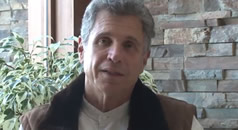Ceremony and Ritual
End–of–life rituals help a person experience not only a peaceful death, but a sacred death, bringing reconciliation and acceptance to the loved ones as well as to the person dying. Rituals help to heal the pain of letting go while at the same time connecting us with something much greater than earthly concerns.
Rituals, however, are not meant to take the place of medical or hospice care. Their practice assumes that the physical needs of the dying person are well attended to and that pain management is under control.
Ritual at the Level of Soul
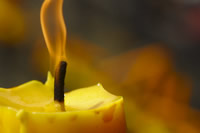 There are four levels through which the shaman engages the world. These levels correspond to the four domains of vibration and light: the realm of the physical world (our body), the realm of thoughts and ideas (mind), the realm of myth (soul) and the realm of spirit (energy). When working with ritual and ceremony, we work at the soul level—the realm of myth. Albert Einstein once said that the problems we face in life cannot be solved at the place in which they were created. Shifting to a higher realm of perception can help us experience oneness with all of creation. When we are aligned with Spirit, we can exercise judgment and wisdom in a new light.
There are four levels through which the shaman engages the world. These levels correspond to the four domains of vibration and light: the realm of the physical world (our body), the realm of thoughts and ideas (mind), the realm of myth (soul) and the realm of spirit (energy). When working with ritual and ceremony, we work at the soul level—the realm of myth. Albert Einstein once said that the problems we face in life cannot be solved at the place in which they were created. Shifting to a higher realm of perception can help us experience oneness with all of creation. When we are aligned with Spirit, we can exercise judgment and wisdom in a new light.
At the realm of myth (soul), language is poetry, music, stories and fairy tales, symbols and images. When we engage in this realm where ordinary language is inadequate, we work as close as we can to the essential realm of spirit. This is the realm talked about in the ancient traditions of the Buddhist, Egyptian and Celtic and reported by individuals who have had near-death experiences (documented by Raymond Moody). It is in this realm that we can shift, through ritual and ceremony, from dying in a place of fear to a place of peace and easily stay conscious for the journey ahead.
Rituals Throughout Life
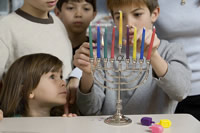 Rituals are a major part of our lives. According to theologian Tom Driver, “Rituals are primarily instruments designed to change a situation.” Rituals transform one state of being into another. They carry us from childhood into adulthood, from membership in our family of birth to the creation of a new family through marriage. Rituals can be complicated but they can also be very simple and personally meaningful. They can be part of a larger religious system or they can be created solely for a specific need. We are all familiar with the many traditions surrounding the wedding ceremony or the celebration of a birthday. When we light candles on a cake and sing “Happy Birthday,” we are performing a well-known ritual.
Rituals are a major part of our lives. According to theologian Tom Driver, “Rituals are primarily instruments designed to change a situation.” Rituals transform one state of being into another. They carry us from childhood into adulthood, from membership in our family of birth to the creation of a new family through marriage. Rituals can be complicated but they can also be very simple and personally meaningful. They can be part of a larger religious system or they can be created solely for a specific need. We are all familiar with the many traditions surrounding the wedding ceremony or the celebration of a birthday. When we light candles on a cake and sing “Happy Birthday,” we are performing a well-known ritual.
Rituals for the Time of Death
Rituals for death can come in many forms. A person’s religious background plays an enormous role in what happens at the time of death. Each faith tradition has its beliefs and symbols which often define the process of death itself and the place of God in this experience. When death is near, even people who have not practiced in adulthood, often want to hear what is familiar to them from their childhood. From there, we can expand into more personalized rituals, or create new rituals to assist them.
Water is recognized universally as a symbol of cleansing and purification. In addition, by its very nature as one of the 4 traditional elements, it has healing properties. Many religious traditions use water for the rite of baptism, even at the time of death. It can be used to help the dying person prepare for death and beyond, such as the sprinkling of “holy water” or “spirit water” and the cleansing of the body after death. Other natural substances that can be used are holy oils or ointments for anointing to sanctify the body and assist the soul in its journey. A ritual familiar to many is the breaking of bread together. These rituals are usually accompanied by specified prayers read aloud by the practitioner. Take the known traditional rituals and make them into something personal and meaningful for the loved one and her family.
There is a wonderful book by Megory Anderson called Sacred Dying, Creating Rituals for Embracing the End of Life that covers in detail many of the unique rituals Anderson performs and creates. Examples of these are: letting–go rituals, rituals for unresolved issues such as anger, remorse, or sadness, and purification rituals. Excerpts from this extraordinary book have inspired much of the information listed in this section
Tools Used for Ceremony
Tools are used to create a peaceful soothing atmosphere that will help the dying person and all present to sense the Divine Presence. They tune into the senses and should be appropriate to the dying person’s wishes and spiritual orientation. These are general suggestions.
LIGHTING: Soft lighting or burning candles can bring feelings of peace and safety.
AROMAS: Burning sage, scented candles, incense, fragrance of flowers can have a calming effect. (When people are dying their sensitivity to odors is acute; make sure the dying person does not have a negative reaction.)
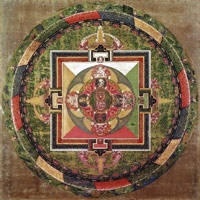 HOLY OBJECTS: Set up an altar and arrange spiritually meaningful articles or pictures on it.
HOLY OBJECTS: Set up an altar and arrange spiritually meaningful articles or pictures on it.
MUSIC: Appropriate music will soothe and inspire. Certain instruments of sound, such as drums or bells, are used in many traditions. Sounds of nature can be very healing.
PRAYER: Oral prayer in keeping with the dying person’s tradition, recitation of psalms, reading of scriptures. In Islam the Qur’an is read, and when the final moments arrive there is complete silence.
SILENCE: Always remember that silence is a very important sound. It is good to remember the value and necessity of simply sitting in silence with the dying person.
The most important thing to remember is that this time is for the person dying. If rituals are created with that in mind, and rooted in love and compassion, then there is no right way or wrong way to do things. Be aware that rituals can help us see things more clearly and bring to the surface issues holding very deep feelings that have been buried in our unconscious.
Ceremony From Ancient Traditions
Many ancient traditions and religions have rituals around dying. The two main ceremonies used by shamans are the despacho and fire ceremony. The despacho for the dead is known as the Aya despacho and is done with the dying person and her family members and friends. A despacho is a prayer bundle composed of layers of tissue paper holding representations of the dying person’s life. This bundle is offered to the fire as a symbol of transformation. It is a joyful way to honor the loved one’s experiences and to let them go.
A burning candle in some ceremonies is sufficient but for the despacho a fireplace or outdoor fire will be necessary. Wait until the fire is “friendly” before approaching it—flames subdued and safe to be near. Only then, approach the fire in silence and make your offering of the despacho. Put your hands briefly through the fire 3 times—drawing the energy of the fire into your belly, your heart, and forehead. This procedure is not meant to be sensational or dramatic, but a form of prayer focusing your attention and energy upon transformation.
Rituals after Death
After the loved one has died, our responsibility to be of assistance is just as critical as it was before her transition. We can look to the person’s religious beliefs and practices for guidance. Steps for this transition may include making symbolic changes in the room, honoring the body by washing it, clothing it, and preparing it for the funeral. Begin the mourning period by planning the pre–funeral ceremonies.
Ceremony and the Human Brain
The Brain’s Influence on Death
The human brain is divided into four “sub–brains” that have developed at different evolutionary stages of life. Each sub–brain governs a different aspect of human nature.
The Reptilian or lizard brain: The first is not much different from the primitive brain that powered the dinosaurs. Its primary functions are survival and reproduction. It maintains and regulates the machinery of the human body including temperature and breathing. This region evolved millions of years ago and contains the brainstem, medulla, and cerebellum. This brain knows how to die in the same way it knows how to be born.
The Limbic or mammalian brain: Requisites for survival became more complex with the rise of mammals. This brain is oriented toward the preservation of the organization or organism. Over time this brain became the prime driver of human experience with its four emotionally laden response programs: fear, feeding, fighting, and sex. Religion and law are both products of our limbic brain and are designed to control the impulses of this region. Regressive behavior can be observed in individuals operating out of this brain in times of crisis. The primary goal of this brain is to extend life and avoid extinction at any cost. The body knows how to die but the limbic brain overrides this. Nothing can stand in the way when the fear of death is activated.
The Neocortex or the new brain of science and individuality: This brain first appeared 100,000 years ago in an unexplained evolutionary quantum leap. It provided a logical, rational thinking cap for the superstitions and ritualistic thinking of the limbic brain. It works to make sense of it all. The emergence of the neocortex was the dawn of what is called mind, for with it came the ability of the brain to reflect upon itself. It is the brain of language, allowing us to define and communicate the experience of our senses and inner life.
The God–brain: This part of our brain is of spirit, transcending individuality and seeking oneness with everything. It is located in our foreheads above our eyebrows and Buddhist monks who enter into the state of bliss—called samadhi—display neural activity almost exclusively in this region. For the God–brain, time is fluid, running backward and forward as if in a dream.
It is important in the death rites that we address all levels of the brain. We do this through ritual and ceremony. The reptilian brain will guide us through the process; the neo-cortex will try to make sense of what is happening, and the limbic brain will process emotions. Through the steps of the death rites, fear from the emotionally laden limbic brain is bypassed and becomes still. The god-brain, recognizing the sacred, knows the way home and leads to liberation



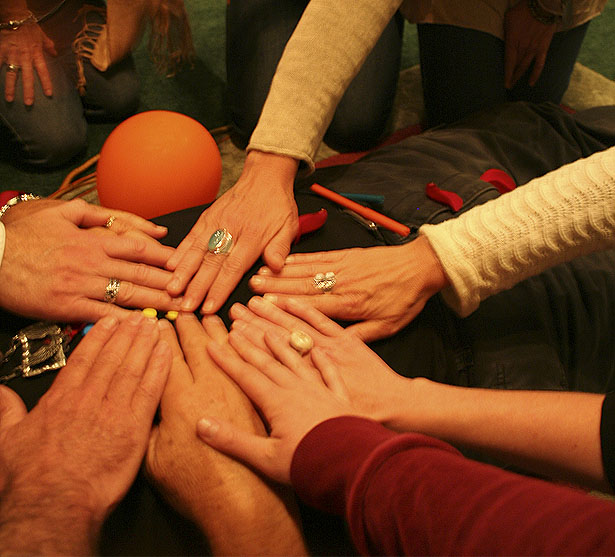
 English
English  German
German 